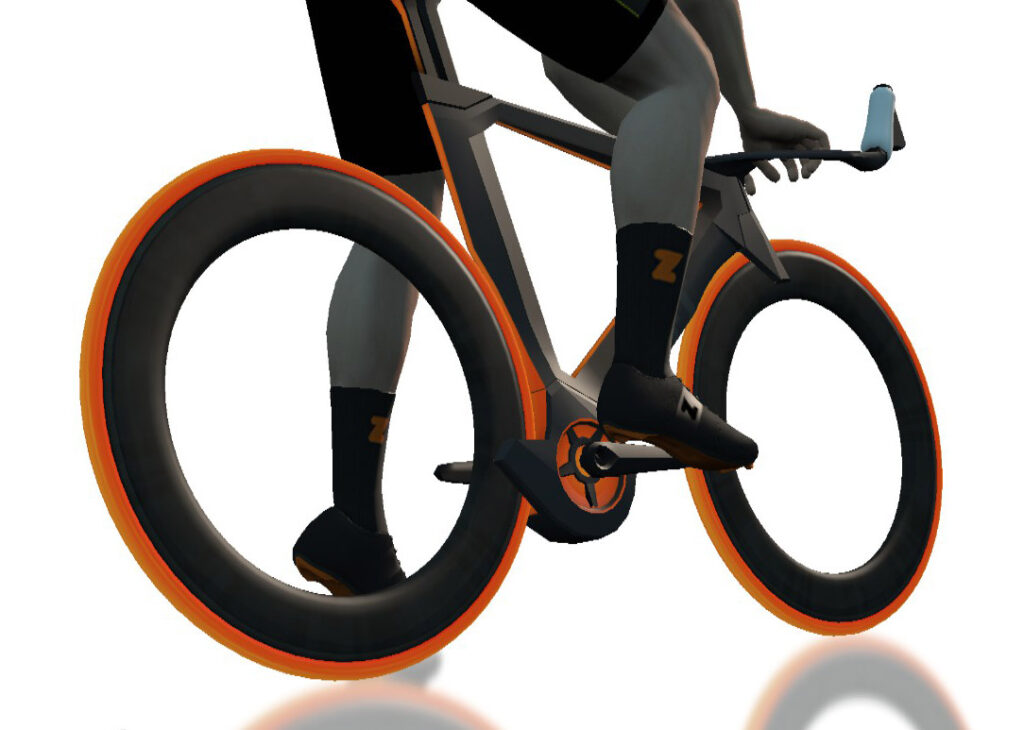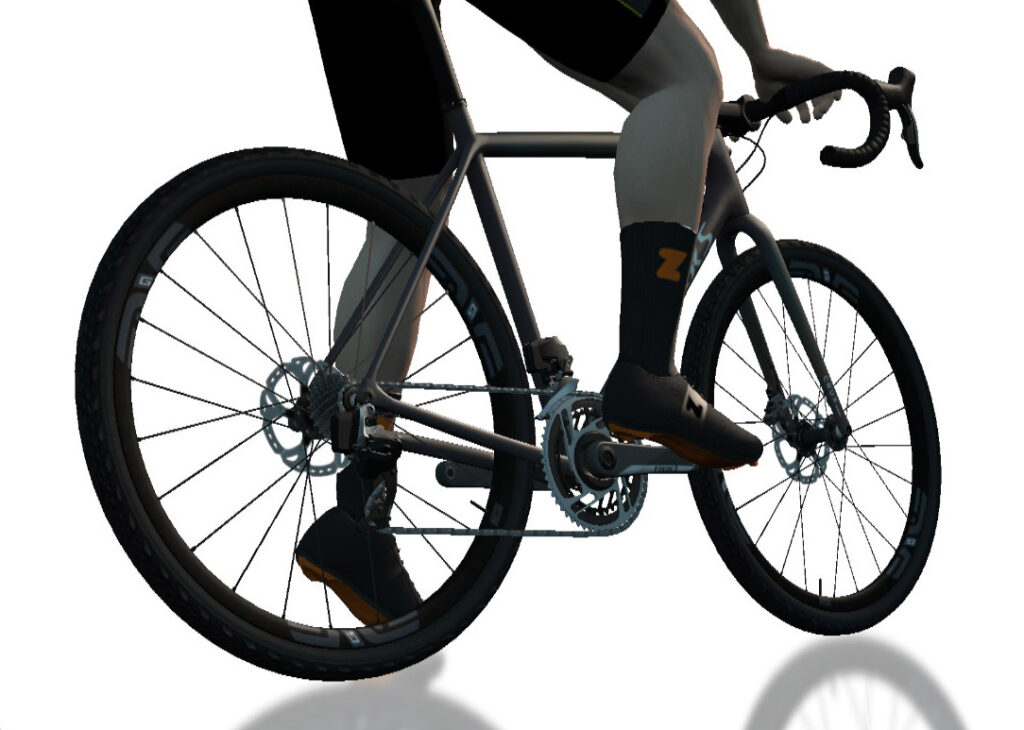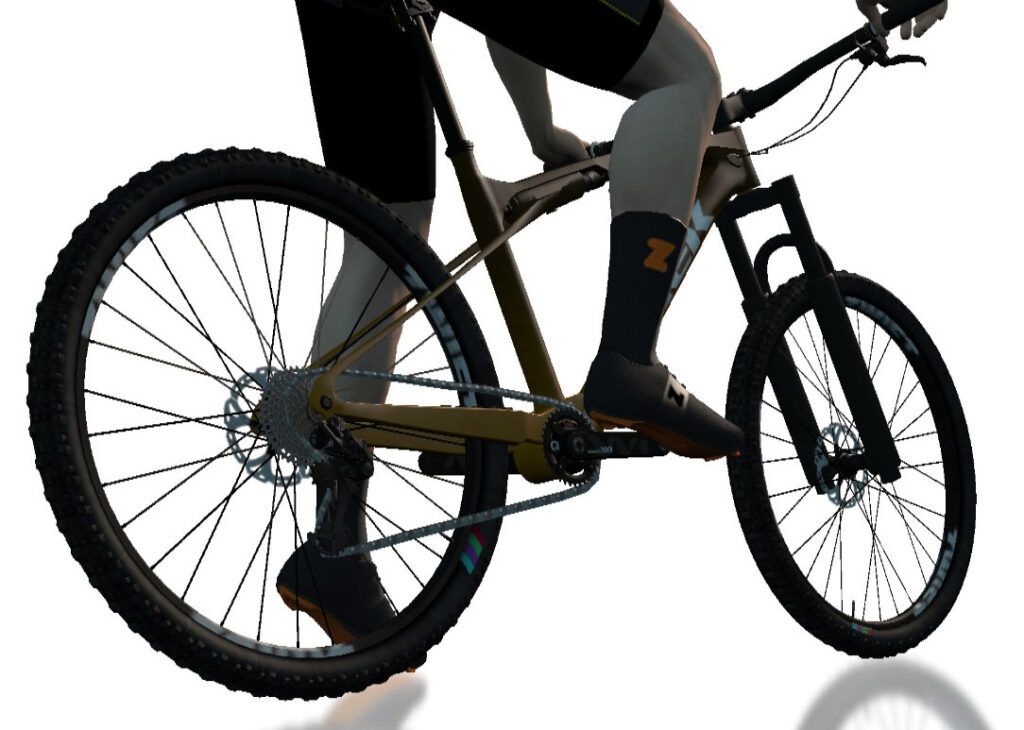Editor’s note: the data in this article is no longer valid, due to Zwift updating the Crr of road bikes on dirt. Read all about it here >
Imagine planning an outdoor race on a mixed-terrain course. It starts with 8km of paved road which includes a bit of a climb, then drops you into a dirt loop which first descends then climbs back up for a total of 9km of dusty riding. Then it’s 12km back home on a (mostly) paved surface.
Now imagine you had a whole garage full of amazing bikes at your disposal, and even a team car following you in case you want to swap bikes at any point. What bike(s) would you ride?
That’s the challenge Zwift’s Road to Ruins route presents for racers. With some bikes performing well on dirt and others performing well on tarmac, what do you ride when including the cost of stopping for a bike swap?
Let’s dive in and figure it out.
If you don’t understand how or why different wheels roll at different speeds on different surfaces in Zwift, check out Crr and Watt Savings of Zwift Wheel Types
About the Tests
For our tests we completed one lap of Road to Ruins using a 75kg rider, 183cm tall, holding 300 watts steady in an isolated environment (no drafting). We tested three different virtual bike setups (plus a swap that we’ll get to later):
- Road: Tron bike
- Gravel: Specialized Crux with ENVE G23 wheels
- MTB: Trek Supercaliber
We chose the Tron bike because it’s a good all-arounder, a very popular bike among racers, and a solid choice if you have to pick one road bike on a hilly race day. The Crux and Supercaliber were selected because they are the best performers in their classes.



It’s worth noting that, while we picked specific bikes for our tests, selecting other bikes would change our test results only slightly. That is, swapping one road race bike for another (for example) would not have changed the overall rankings – not even close! Using different rider weights or power numbers for the tests would have changed the timings as well (obviously) but would not affect the overall rankings, either.
Test Results
Here are the Road to Ruins lap times for each of our tests:
- Tron bike: 49:44 (see on Strava)
- Specialized Crux with ENVE G23 wheels: 50:12 (see on Strava)
- Trek Supercaliber: 51:24 (see on Strava)
Conclusion: when you’re talking about a steady solo effort, road bikes have more than enough tarmac time to make up any time lost to the gravel or MTB setups in the dirt.
Bike Swapping
This test wouldn’t be complete without trying one other approach: the bike swap! If you’re not familiar with how this works, the idea is that it may make sense, on a mixed route like Road to Ruins, to change bikes mid-ride, swapping to a bike that will go faster on the upcoming road.
(Some Zwifters don’t want to hassle with swapping, and I get that. Personally, I find it interesting and fun to hop on a fat-tired bike and zip past packs of hard-charging roadies. But to each their own!)
Since we know that the road bike is fastest on pavement, and the gravel bikes are fastest on dirt, we can easily formulate a smart swapping strategy to test. Road to Ruins goes into the Jungle then comes back out onto pavement, so when we hit the Jungle dirt we’ll swap to the gravel bike, then once the dirt ends, we’ll swap back to the road bike.
And we’ll do it as quickly as possible, using the bike swap hack. We used the Chapter2 TOA with ENVE 7.8 wheels (a good all-arounder) as our road bike, and the Specialized Crux with CADEX wheels as the gravel bike.
Using this strategy, our lap time went from our previous best on the road bike (49:44) to 49:35. A savings of 9 seconds (see it on Strava). This may not sound like much, but consider this: our swaps in the test were pretty poorly done (I have more practice swapping while actually riding in Zwift than I do swapping for my bot). In a live Zwift ride I would estimate I could trim another ~30s off of the overall time just by swapping faster. So that means the swap setup really beats the Tron by ~40 seconds.
Watch a Strava time comparison of our 4 bike tests:
Swapping Gotchas
There are four “gotchas” worth mentioning when it comes to bike swapping. First: you have to stop moving in order to change bikes. Using our method for changing bikes quickly, you will still probably lose 12-15 seconds each time you swap, if you do it smoothly. Practice makes perfect.
Second: you will want to accelerate hard after you stop for the bike swap, to get back up to speed as quickly as possible. Plan on 10-20s of hard effort before you settle in.
Third: if you’re going against packs of riders in a double draft race, a gravel bike probably won’t provide enough of an advantage on the Jungle descent. (I discuss this more in this post.) I would recommend staying on your road bike and sitting in the draft until you begin climbing after reaching the bottom of the Jungle. This lets you benefit from the double draft on the fast descent (where drafting is a major factor) as well as over the wood and paved portions at the bottom of the Jungle, where road bikes roll faster than gravel bikes.
Fourth: Zwift currently only lets you “save” one wheel selection at a time (I call this a bug, not a feature). You can save a wheel selection for your road bike or gravel bike, but you can’t do both. So if you equip, for example, the ENVE 7.8 wheels for your road bike (which “saves” your road wheel selection), then swap to your gravel bike, Zwift will automatically equip your gravel bike with the first gravel wheels on your list, because you have no gravel wheel saved (since that one save slot is occupied by your ENVE 7.8 road wheel selection).
Because of this bug, swappers will want to save their road wheel selection, then let Zwift auto-select the first gravel wheels in their garage. As long as it’s not the default Zwift Gravel wheels, all of the other four name-brand gravel wheelsets perform the same and are good options. This will let you swap back to a fast road setup quickly when you leave the Jungle.
Lab vs Real World
So the swap delivers the fastest overall time on Road to Ruins. But of course, our tests just show timings in isolation! In a drafting race situation, there are other important things to consider.
For example: what if you enter the Jungle with a strong group of riders? Is it worth dropping off the back of the group in order to swap bikes? Will you be strong enough to chase back onto the group and drop them on the Jungle Climb so you can swap back to the road bike afterward and still be in the same group, or (ideally) one further up the road?
Conclusion
An all-arounder like the Tron bike easily beats the best gravel and mountain bikes on the Road to Ruins route. But if you’re willing to pursue the swapping strategy, and do it smartly, you can gain significant speed advantages in the Jungle dirt without losing anything on the pavement.
Your Thoughts
Questions or comments? Share below!